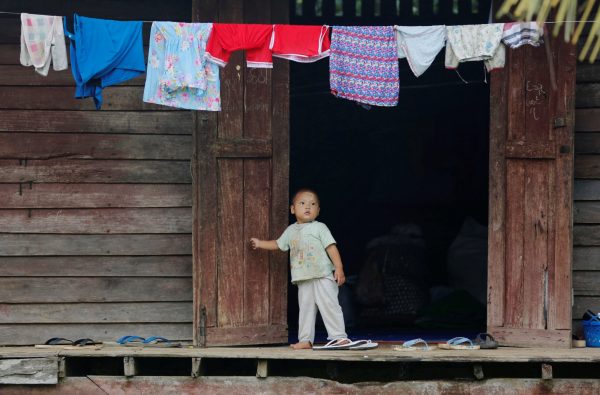The ceasefires that were established in 2012 and reconfirmed under the NCA across southeast Myanmar have largely held — but not without occasional flare ups.
After both sides signed the NCA, there have been clashes between the Tatmadaw and the main Shan EAO (the Restoration Council of Shan State). Similar clashes have broken out between the Restoration Council of Shan State and the Ta’ang National Liberation Army (a non-signatory of the NCA) in northern Shan State. Over the past year the Tatmadaw has continued to launch attacks on groups that did not sign the NCA, such as the Kachin Independence Organisation. These attacks have included large-scale offensives which have forced civilians to flee and deepened humanitarian crises across conflict-affected parts of the north.
The Kachin Independence Organisation and other members of the United Nationalities Federal Council (a key EAO coalition) have been willing to sign the NCA, but only under certain conditions.
State Councillor and de facto government leader Aung San Suu Kyi has spoken in favour of inclusiveness. But the government and the powerful Tatmadaw have so far refused to talk with the China-backed Federal Political Negotiation and Consultative Committee (FPNCC) — the other key EAO coalition. The FPNCC is looking to scrap the NCA and start over with the peace process.
Unresolved issues include the role of international observers, how to resolve disputes within the peace process as well as the relationship between achieving peace process-based political progress and the conditions under which EAOs would be willing to consider giving up their arms. For most of the country’s EAOs, disarmament would only be possible once a comprehensive political settlement has been agreed.
In this context, steps have been made towards establishing joint monitoring committees under the NCA that include the Tatmadaw, EAOs and civilians — at least in those parts of the country where the NCA has been implemented. Following the 21st Century Panglong Conference in August 2016, a form of political dialogue has begun to emerge. This dialogue consists of sub-national consultations with plenary sessions to be held at the union level approximately twice a year. But it remains unclear whether the political dialogue will be regarded as sufficiently inclusive. Myanmar’s ethnic stakeholders are highly diverse and will be challenged to develop coherent positions on key issues.
Questions remain whether the government and Tatmadaw will be willing to allow EAOs and ethnic communities sufficient time to prepare for political dialogue — and more fundamentally, it is unclear whether those communities’ ethnic demands and concerns will find a place on the Union Peace Conference agenda and the final Union Peace accord.
Will the Tatmadaw leadership be willing to endorse a comprehensive political settlement with resulting political change? There is deep-seated mistrust of the military among ethnic communities. They remain suspicious that the government wants to move ahead quickly with the peace process and rush participants into an agreement well before the next elections in 2020.
Aung San Suu Kyi and ethnic political leaders see federalism as a key element in resolving Myanmar’s decades of violence and ethnic conflict. But federalism means different things to different actors. It remains unclear whether an agreement can be reached and whether the Tatmadaw is willing to support a fundamental re-imagination and reorganisation of the country’s troubled state–society relations.
In the meantime, most of southeast Myanmar and other areas covered by the NCA remain relatively peaceful. Conflict-affected communities are still concerned about widespread land grabbing and are unsure about the future. This comes despite most communities having experienced significant improvements in their livelihoods since the ceasefire.
But across much of the rest of the country, ethnic communities continue to be exposed to widespread violence. The situation is complicated and compounded by new forms of conflict emerging in Muslim-populated parts of northern Rakhine State in western Myanmar where the stateless Rohingya community has long suffered abuse and marginalisation.
Northern Rakhine State has recently seen a very worrying upsurge of violence and heavy-handed response by state and military authorities. Some 600,000 Rohingya civilians have fled to neighbouring Bangladesh. Although the Myanmar and Bangladeshi governments have recently agreed in principle that these people can return, it remains far from clear whether they will be willing and able to do so in dignity. Where Rohingya civilians might go and under what conditions they would return also remain to be seen.
So even if the Nationwide Ceasefire Agreement continues to hold — albeit imperfectly — the military’s intransigence and widespread ethnic division threaten comprehensive political settlement.
Ashley South is a Research Fellow at Chiang Mai University at the Centre for Ethnic Studies and Development.
This article is part of an EAF special feature series on 2017 in review and the year ahead.

